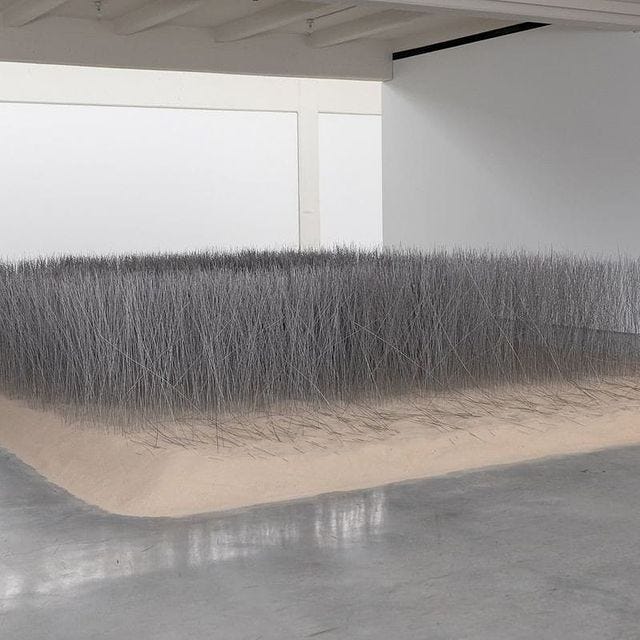Selections from "Beyond Being and Nothingness"
Lee Ufan's central text on the art movement Mono-ha
The following are selections from the essay “Beyond Being and Nothingness: On Sekine Nobuo (1970–71)”, written by visual artist and philosopher Lee Ufan (translated by Reiko Tomii). This essay is considered by many to be the origin of Mono-ha, an art movement in Japan of the 1960s and 1970s. Visual artist Asako Shiroki considers the Mono-ha artists as significant influences on her practice. Read our interview with Shiroki, and visit her award-winning solo exhibition as an immersive 360 degree map featured this month at EXPOBLVD.
In conventional art oilclay and dirt are materials used, for example, to model in sculpture or create an objet. Oilclay and dirt have long been deemed useless themselves; rather, they have been considered materials or tools for the artist to make an image or materialize an objet. When oilclay or dirt is turned into an image of a human, or used for the representation of an image of a thing, they close off their own expressions and beings, prompted to turn into materials for image-making or tools for cognition. To begin with, in the modern conception, to “express” or to “make” means objectification into an objet.
Some may stomp on the earth, some may erect buildings on it, and yet others may fly up from the earth into the sky. Countless others live their lives on the earth, making various things. Ordinarily, people use the earth to make tools, instinctively and indifferently, busily turning the earth into objets in accordance with their image of objectification. However, although they may unconsciously represent the world as an object with everyday use value and functionality, they rarely see or engage the world as a living being, a mutually related scene, as an open world. Only when they happen to become encounterers, do they sense, notice, and see it. In everyday life, while ordinary people barely notice the earth, an encounterer sees the earth breathing, its expression, its language, its history, and its being.
An artist must be a poet in spirit in the sense that he is a guardian of being, an encounterer. In other words, an artist is not a special being, but in essence he who seeks to keep perceiving the world of encounter deeply and directly based on the experience of poetic moments and he who tries to be a discoverer of language. As I have discussed, we call him an artist when he stakes himself on the act of occasioning an intermediary structure of encounter to illuminate the world, which we think is invisible, on the horizon of perception.



